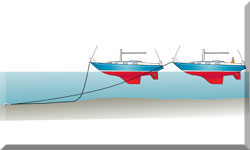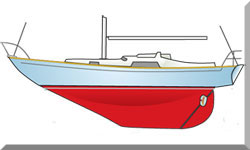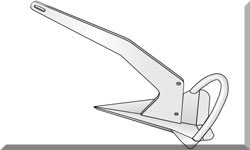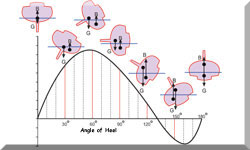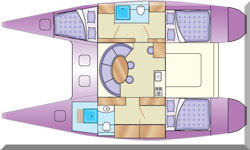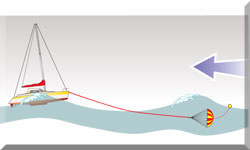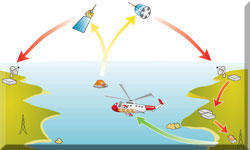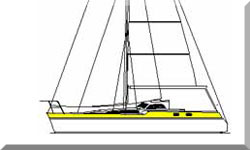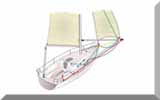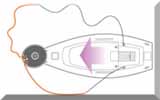- Home
- Rigging
- Standing Rigging
- Masthead Vs Fractional Rig
The Masthead vs Fractional Rig Argument
Ever noticed that some sloops have their forestay attached to the top of the mast and others have it attached a short distance below the top? It wasn't just the whim of the rig designer; there are sound technical reasons for the different styles. The former is known as a masthead rig, and the latter the fractional rig—we'll take a look at them both in this article.
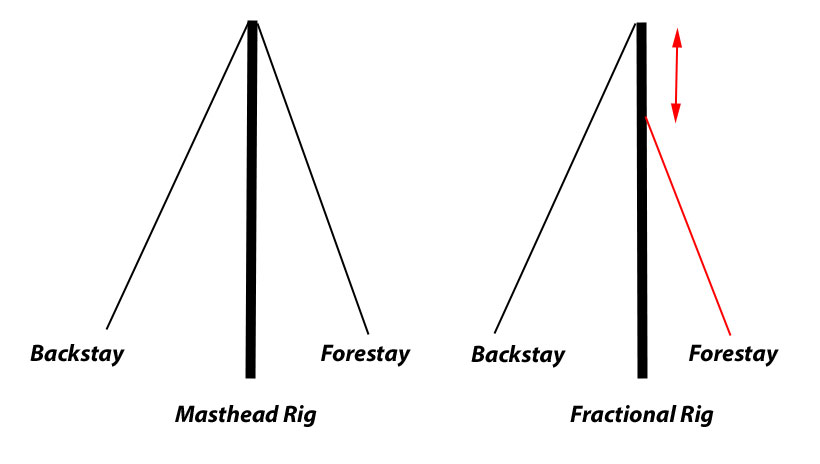
Fractional rigs are typically categorised as being 7/8 or 3/4 rigs, the fraction relating to the location of the forestay connection as a fraction of the full length of the mast measured from deck level.
The Masthead Rig
This version is most often found on cruising boats, owing to its simplicity and robustness—two key principles firmly embedded in the hearts and minds of cruising sailors.
With this rig, when the wind increases and the boat begins to heel rather more than the crew would like, the first action to be taken is to reef the headsail. This is a simple matter if your boat is equipped with a headsail furling gear, but without one you'll need a sail change which is considerably less convenient.
Although there's no denying that a headsail loses an increasing loss of efficiency with each turn of the furler, this is considered a small price to pay for a softer ride.
The Fractional Rig
The crew of the fractional boat will react to a rising wing rather differently. Their headsail is small enough to avoid having to reef it, so their first action—if indeed needed at all—is to pull a slab into the mainsail. Unless they have an in-mast or in-boom furling system—abominations in my opinion—then the reefed mainsail plus the small jib will straighten the boat up nicely.
The Benefits of Mast Bend in Fractional Rigs
The fractional rig has something else in its favour—by tightening the backstay a bend will be induced in the mast, thereby flattening the mainsail resulting in a number of benefits...
- Improved Sail Shape: One of the primary benefits of mast bend in fractional rigs is the ability to fine-tune the shape of the mainsail. By bending the mast, sailors can flatten the sail, reducing drag and improving upwind performance. This adjustment is particularly useful in strong wind conditions, where a flatter sail helps maintain control and speed. The ability to manipulate sail shape with precision allows for more efficient sailing, making mast bend a valuable tool in optimizing performance.
- De-Powering the Rig: In gusty conditions, mast bend plays a crucial role in de-powering the rig. By increasing the bend, the sail’s draft, or the depth of the curve, moves forward, effectively reducing the power generated by the sail. This de-powering mechanism makes the boat more manageable and reduces the risk of excessive heeling, enhancing safety and comfort for the crew. The flexibility to adjust power in response to changing wind conditions is a significant advantage, particularly in challenging sailing environments.
- Enhanced Aerodynamics: Another advantage of mast bend is its impact on the sail’s aerodynamics. A bendy mast allows the mainsail to better align with the aerodynamic flow over the sail, optimizing lift and minimizing turbulence. This alignment leads to more efficient sailing, especially when trying to sail close to the wind. The improved aerodynamics contribute to better speed and performance, making fractional rigs with mast bend highly desirable for competitive sailing.
- Flexibility in Sail Trim: The ability to adjust mast bend provides greater flexibility in sail trim. Sailors can quickly adapt to changing wind conditions, ensuring that the boat maintains optimal performance. This level of control is a significant advantage in racing, where fine margins can make a big difference. The flexibility offered by mast bend allows sailors to fine-tune their rigging to achieve the best possible performance, giving them a competitive edge on the water.
In conclusion, masthead rigs and fractional rigs offer different benefits depending on the sailing objectives. Masthead rigs provide stability and reliability, ideal for cruising, while fractional rigs, with their bendy masts, offer enhanced performance, flexibility, and control, making them the preferred rig for competitive sailors.
Me? Give me a masthead cutter every time!
Recent Articles
-
Parachute Sea Anchor Issues: Your Questions Answered
Mar 27, 25 01:52 PM
Parachute sea anchors are vital for stabilizing sailboats in heavy weather, but they can be difficult to deploy. Here we take a look at common issues and their solutions. -
Sailing Drogue Issues: Your Questions Answered
Mar 27, 25 12:52 PM
Stay safe in heavy seas! Learn how sailboat drogues can control speed, prevent pitchpoling, and make storm survival manageable for offshore sailors. -
Solar Panel FAQ's
Mar 27, 25 05:16 AM
Got a question about marine solar panels? You'll probably find the answer here...

